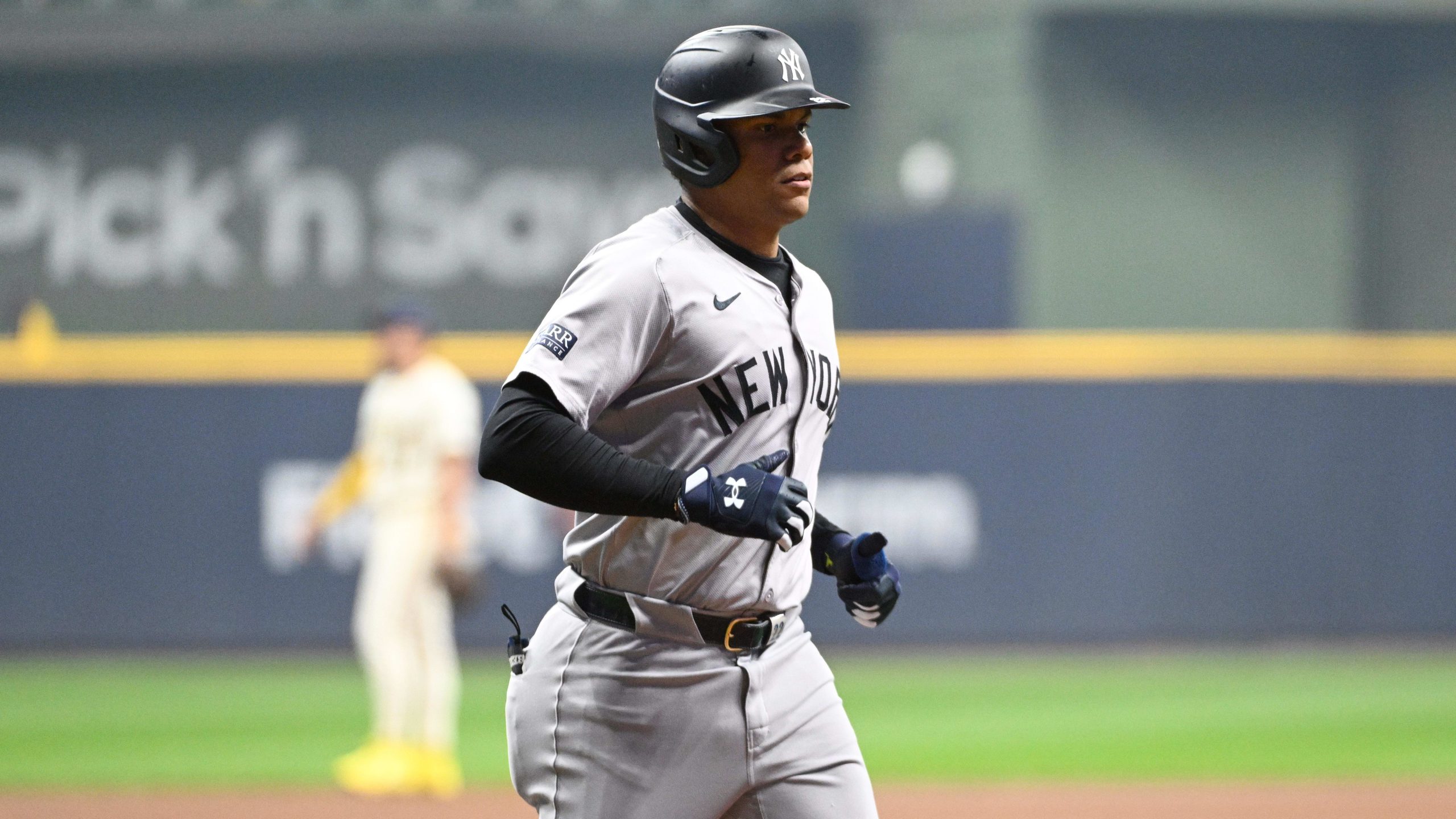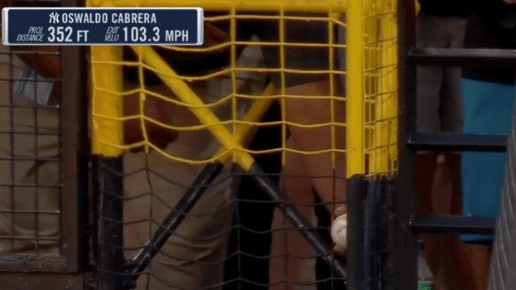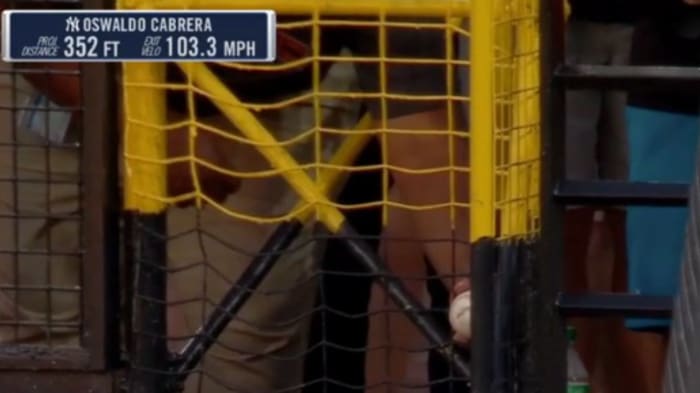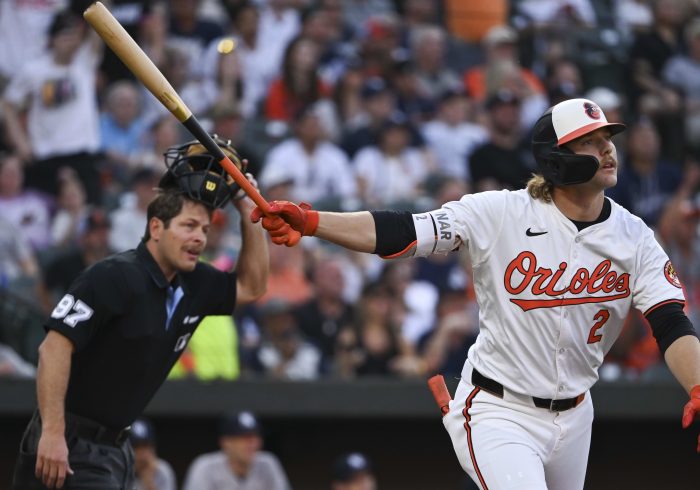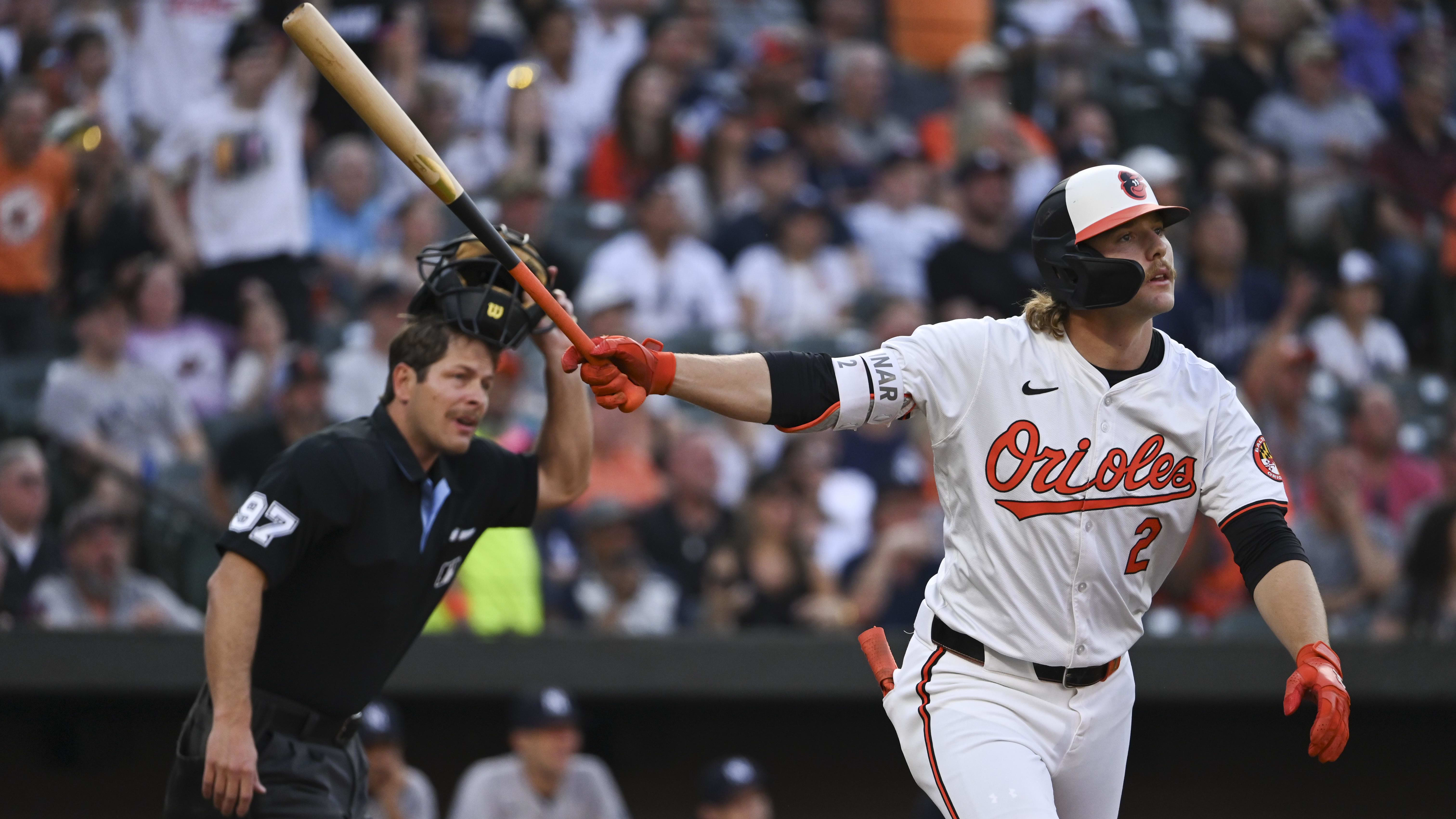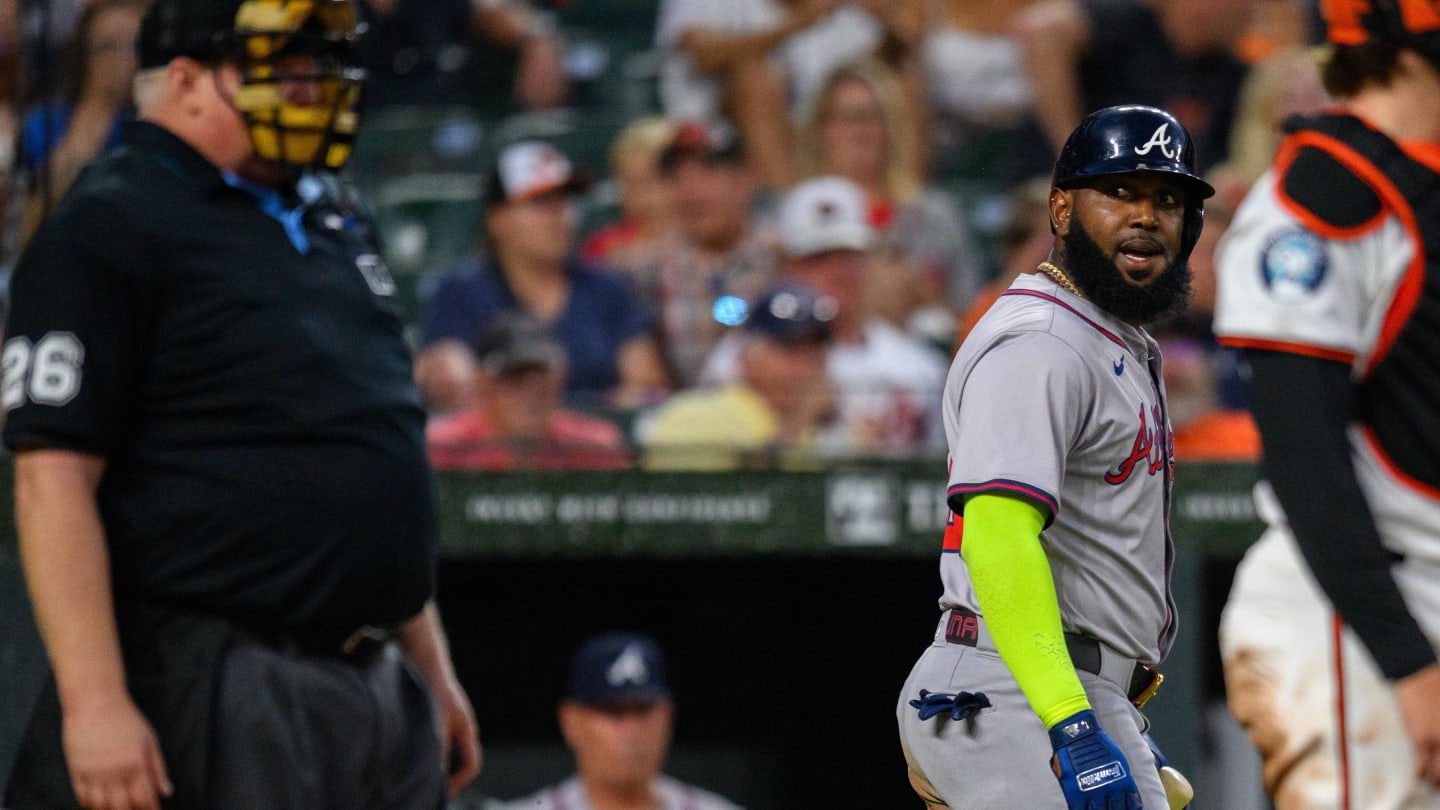New York Yankees outfielder Juan Soto unleashed a mammoth home run during Tuesday’s loss against the Baltimore Orioles, and he boldly opted to stare down pitcher Dean Kremer as he began to trot the bases.
When asked after the game about the staredown with the Orioles’ starter, Soto told reporters that he chose to glare at Kremer because the right-hander didn’t like his “Soto Shuffle.”
“I bet he didn’t like the homer, too,” said Soto, via Bryan Hoch of MLB.com.
Soto’s sixth-inning solo launched a stunning 447 feet into the seats in left field, and he was clearly fired up about the moonshot despite the Yankees still trailing 4–2, a scoreline that would hold out for the remainder of the game.
If Kremer wasn’t a fan of Soto’s antics in the batter’s box, he’s certainly not alone, though the left-handed slugger doesn’t seem likely to put an end to his shuffling maneuvers.
The 447-foot bomb was Soto’s eighth of the year, and he’s up to 25 RBIs on the campaign through his first 31 games.
